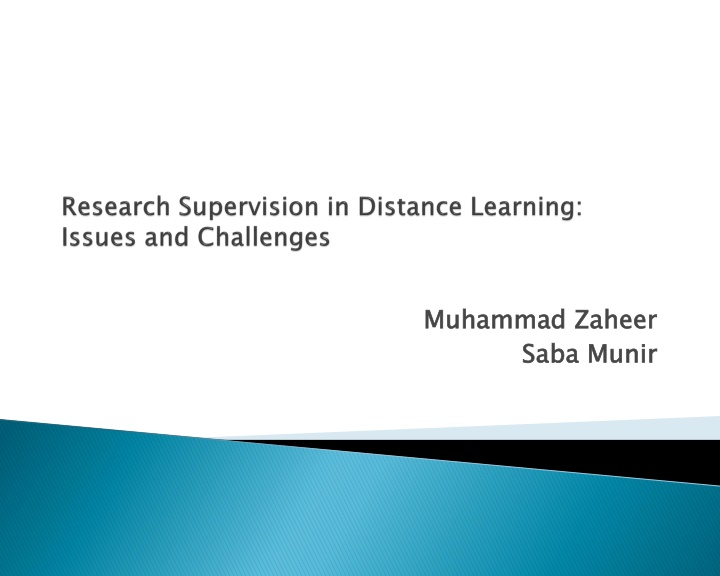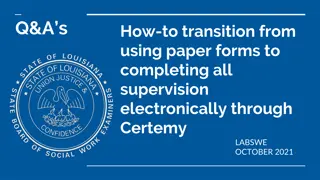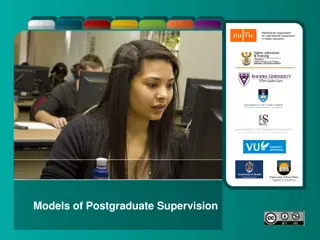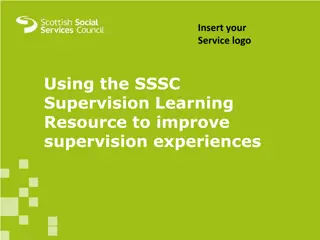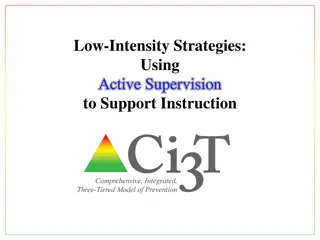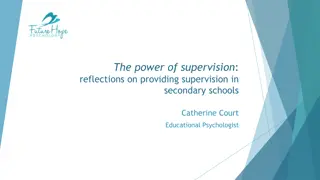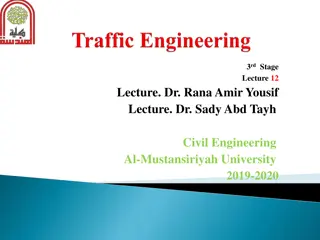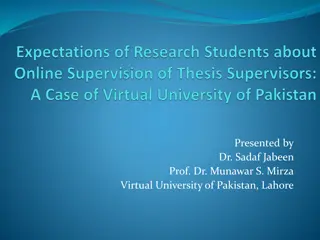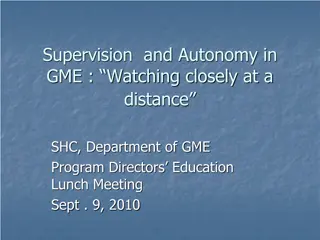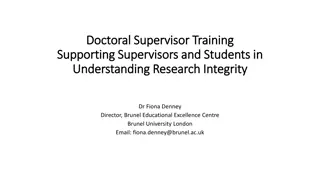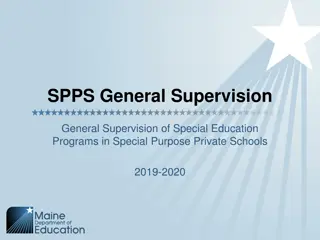Challenges in Research Supervision for Distance Education
Challenges faced by teachers in research supervision for distance education include shifting the burden of learning to learners, diversity among students, and separation of student and teacher by time and space. Effective research supervision is crucial for success in distance learning.
Download Presentation

Please find below an Image/Link to download the presentation.
The content on the website is provided AS IS for your information and personal use only. It may not be sold, licensed, or shared on other websites without obtaining consent from the author.If you encounter any issues during the download, it is possible that the publisher has removed the file from their server.
You are allowed to download the files provided on this website for personal or commercial use, subject to the condition that they are used lawfully. All files are the property of their respective owners.
The content on the website is provided AS IS for your information and personal use only. It may not be sold, licensed, or shared on other websites without obtaining consent from the author.
E N D
Presentation Transcript
Muhammad Muhammad Zaheer Saba Zaheer Munir Saba Munir
Background Pakistan is the sixth most populous country Large population with small number of Qualified Faculty and therefore Universities/Institutions have inadequate number of Professors Access to higher education is limited Distance learning overcomes the issues of capacity, infrastructure and faculty. It provides standardized quality content to all students without any discrimination.
Issues in Distance Learning Burden of learning is shifted to the learner (though flexibility is there) Students diversity even in the same course Student and teacher are separated by time and space Thesis Supervision in Distance Learning Responsibility of learner Challenges of supervisor
Research Objective To explore the issues and challenges faced by the teachers in research supervision with respect to distance education. Research Question What are the perceived key determinants of effective research supervision in distance learning according to the supervisors?
Supervision is defined as intensive, interpersonally focused one-to-one relationship between the supervisor and the student (Wood & Louw, 2018) According to MacKeogh (2006) distance teaching mode poses many challenges for the instructors student s access to the resources increased chances of deception Lindner, Dooley, and Murphy (2001) conceptualized that lack of on-campus interpersonal dimension can be a disadvantage for research students as face to face interaction helps them in acquisition of research knowledge
In the absence of non-verbal communication distance supervision becomes more challenging for the supervisors and they need to exert extra efforts to compensate it (Lindlof & Shatzer, 1998) Butcher and Sieminski (2006) stated that face to face interaction between student and teacher is vital for the motivation, confidence building and knowledge enhancement of supervisee and distance supervision sometimes becomes passive due to lack of face to face interaction ICT can be of great assistance in providing frequent feedbacks and high level of interaction between supervisor and supervisee(Hansen & Hansson, 2015).
With or without technology, the supervisor is the key element in the research process. Students have always been the main focus of studies. This study particularly has focused on the challenges faced by the supervisors.
Research type Qualitative study Inductive approach Research Paradigm Interpretivism Research Approach Grounded Theory using Gioia et al. (2013) methodology Data Collection Semi structured Interviews Interview guide 25-60 minutes duration Audio recording
Sampling Technique Purposive sampling, research supervisors from different departments of VUP and some conventional universities Sample Size 16 research supervisors, according to Steinar (2007) in qualitative research sample size ranging from 5 to 25. Data saturation and theoretical sampling
Informant # Informant # Gender Gender Age Age Workplace Workplace Experience Experience Position Position 1 1 2 2 3 3 4 4 5 5 6 6 7 7 8 8 9 9 10 11 12 13 14 15 16 Female Female Female Female Female Female Female Female Male Male Male Female Male Male Male Male 38 33 32 32 34 42 35 34 46 40 49 33 31 32 38 51 Conventional *DL DL DL DL DL DL DL DL DL DL DL Conventional Conventional DL Conventional 16 years 11 years 12 years 11 years 08 years 17 years 12 years 10 years 10 years 14 years 07 years 10 years 04 years 05 years 15 years 23 years *AP Lecturer Lecturer Lecturer Instructor AP Lecturer Lecturer AP Lecturer AP Lecturer AP AP AP Professor 10 11 12 13 14 15 16 *AP: Assistant Professor, *DL: Distance Learning
I Issues faced by the Supervisors ssues faced by the Supervisors First First order categories Working students have less time for research Working students want mentoring after office hours Students have to take off from office to communicate House wives are also busy in family order categories Second Order Themes Second Order Themes Aggregate Dimension Aggregate Dimension Time constraints Some job holders have official restrictions Some are deployed in far areas Official restrictions Working students often become dormant Working students don t contact regularly Irregular contact Communication Barriers Technical issues de-track the communication Slow internet connection Students of far flung areas are not well versed with technology Tech-issues Overseas students have issues to use voice calls in Gulf States Legal issues
Challenges in distance learning Challenges in distance learning First order categories First order categories Second Order Themes Aggregate Second Order Themes Aggregate Dimension Dimension Main difference between conventional and DL supervision is limited interaction. It is an overall grooming activity for students In DL, student teacher interaction is not that frequent Lack of FTF interaction Student- Supervisor interaction Variety in student body is a challenge Exchange of views and concepts is tough in mathematics Geographic dispersion Diversity Online groups/blogs often influence students regarding research methodology Myths about distance learning Virtual Communities Challenges in DL Myths about distance learning in students We have just made up our mind that virtual is difficult Perceptions Once thesis is done students no more contact you for paper publication. Our relationship generally concludes after the completion of research work Academic Collaboration
key success factors in distance key success factors in distance supervision supervision First order categories First order categories Second Order Themes Aggregate Dimension Second Order Themes Aggregate Dimension Self-motivation is the key in DL Motivated students have good contact with us Students who are enthusiastic, complete the research in time Attitude Key Success Factors In my opinion FTF and distance have not much difference. We have just made up our mind that virtual is difficult We need to deal them properly, empathy. Perceived gap of time and distance, actually it is not (overseas). I feel DL as more convenient. Online guidance is better than conventional DL is more convenient and better. Mindset
Time constraints, irregular contact, technological issues, legal issues and official restrictions create communication barriers between students and supervisors Student-supervisor interaction, student diversity, virtual communities, students perceptions towards distance learning and academic collaboration are the main challenges in the distance learning supervision
Students attitude and supervisors mindset are the key determinants of effective research supervision in distance learning
Institutions should facilitate face to face interaction more frequently with the students who are involved in research Access to online databases should be enhanced Students should be facilitated to participate in research workshops, conferences and seminars
